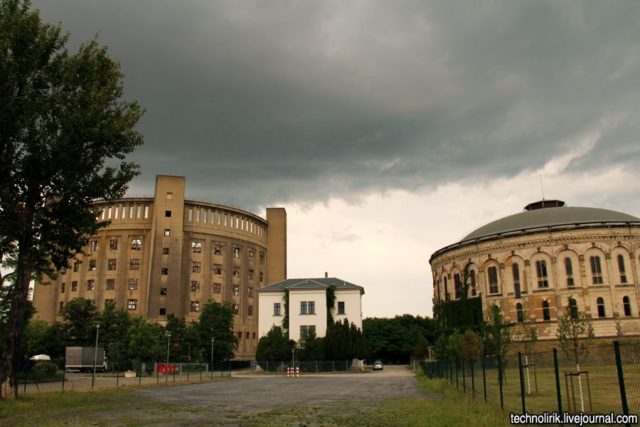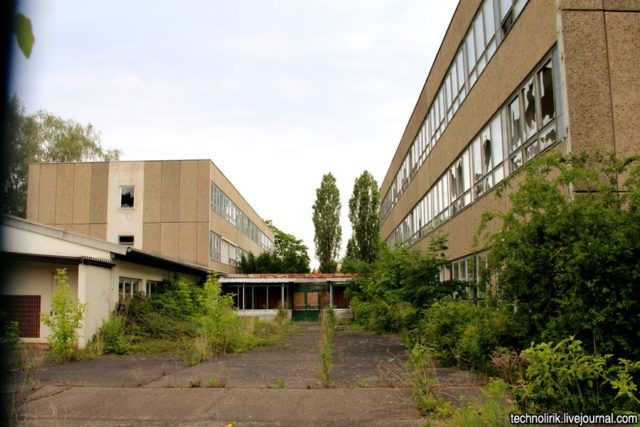At 10 Gasanstaltstrasse in Dresden, there stands an abandoned municipal gas plant known as the Erlwein Gasometer.
Until 1907, just two gas tanks were located on that site, having been built between 1887 and 1891 by the German architect Theodor Friedrich.
The gas produced by the Gasometer was used to illuminate streets and houses in the surrounding urban area. At that time, it could also be used in gas stoves.
As demand for gas increased, there was a need to construct a third gasometer at the plant, six-stories high. Hans Erlwein, an architect from Dresden, drew up the project, and work began in 1907 under his supervision.
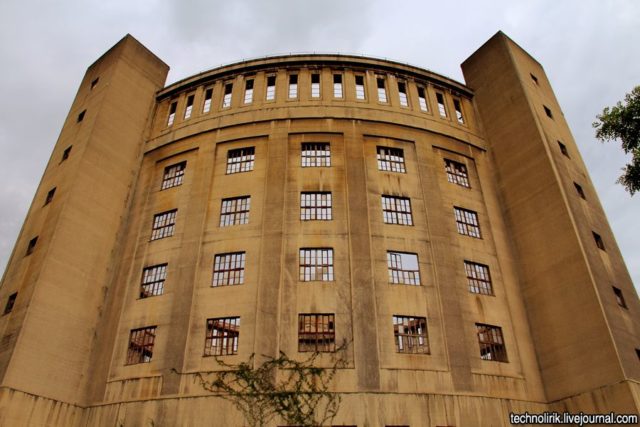
The new gasometer reflected the style of architecture seen in the rest of the city. It was a stunning piece of architecture which is often described as looking more like a coliseum than a public utility works.
An interesting element to the design was that no matter where you stand to view the building, you can always see three identical stair towers on the facade. There are five of them in total, and Erlwein’s intention was for the gasometer to look equally harmonious from any viewpoint.
The principle behind the gasometer was that it would store excess gas at a time when the population had a low consumption rate, and when the demand increased, the stored gas would automatically be fed back into the system.
This building is considered to be the first self-supporting reinforced concrete structure built in Europe since reinforced concrete was a relatively unknown building material at that time.
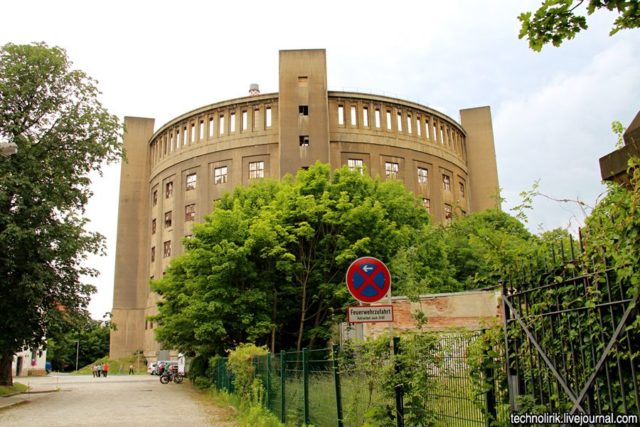
With a capacity of 110,000 cubic meters (almost four million cubic feet), this was the largest gas tank in the world at the time. It stands 68 meters (74 yards) high while the diameter of the dome is 65 meters (71 yards), affording the building 4,000 square meters (4,783 square yards) worth of roof area.
Later, further structures were added with designs based on the works of Hans Poelzig. A metal gas cylinder was also added at a later date.
In February 1945, Dresden was bombarded during World War II. Many incendiary bombs hit the site so that Erlwein’s gasometer was burned from the inside out and the gas plant itself was damaged.
But repairs were quickly made and, in March 1945, the plant was partially restored and could return to producing gas, although only in small quantities.
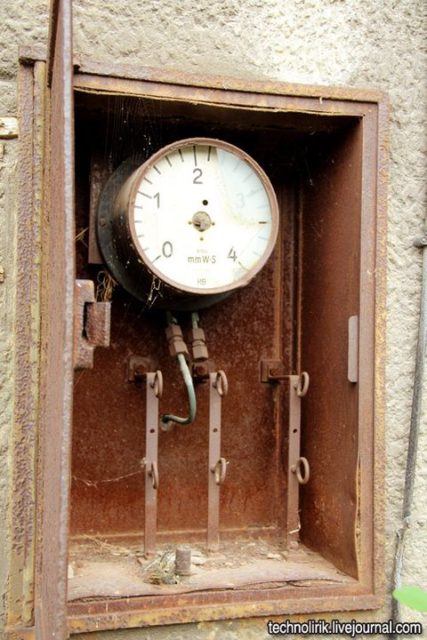
Over time, the city began to switch to natural gas and this ultimately led to the Dresden gas plant ceasing to produce gas in 1973. The Erlwein gas tank was kept running as a buffer but was eventually decommissioned. In 1974, the first gas holder was dismantled.
The remaining two gas tanks were abandoned and a lack of care soon led to them posing a hazard.
By the 1990s, it had become clear that the roof of the Erlwein gas tank was close to collapse. A decision was made to blow it up, and this was done in 1998.
After the roof was demolished, various proposals began to be advanced by potential investors. In one instance, there was a suggestion to create a musical theater within the walls of a gas holder. However, despite this project being supported by many people, it was not implemented.
On December 9, 2006, one of the first, smaller gasometers was converted into an exhibition space called the Panometer.Because of its shape and layout, the building was able to accommodate various exhibitions of huge panoramic pictures that required a viewing angle of 360 degrees. Previous art installations have included a picture of Dresden in 1756 and another one of the city in 1945.
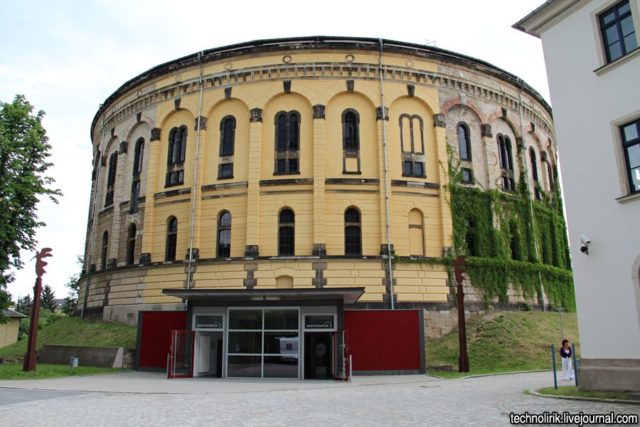
At present, the Erlwein gasometer is a protected architectural monument. Hopefully, it is just a case of waiting for the right investors to come along with the perfect project for it.
Currently, it is impossible to gain entrance to the gas tank, although since it has been dismantled, there is nothing inside it to see anyway.
Next to it is a complex of abandoned buildings, which is fenced off. It is generally thought that this was the location of the gas plant management offices.
There are two interesting details that have survived to this day. The first is a large dial on the facade of the building which was used to control the water level in the gas tank.
The second is the logo of the architect Hans Erlwein. It was his custom to leave his personal logo on the buildings that were built according to his designs. A picture of it can be found below.
A big thank you to Alexandr and his LiveJournal account for sharing such amazing photographs about a site crammed with rich history! Alex lives in Germany and has got an account where he writes about different locations. You should definitely check his LiveJournal account and Facebook page.
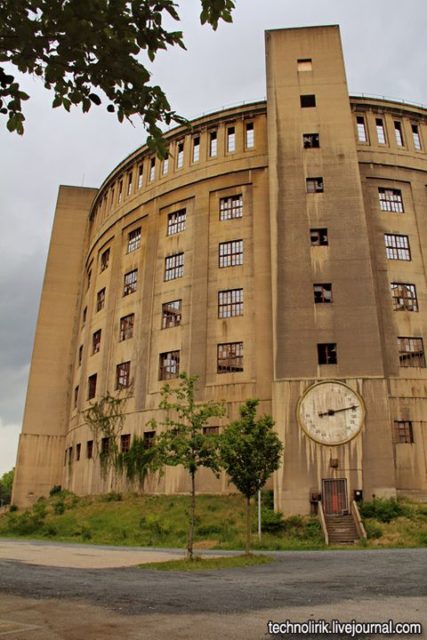
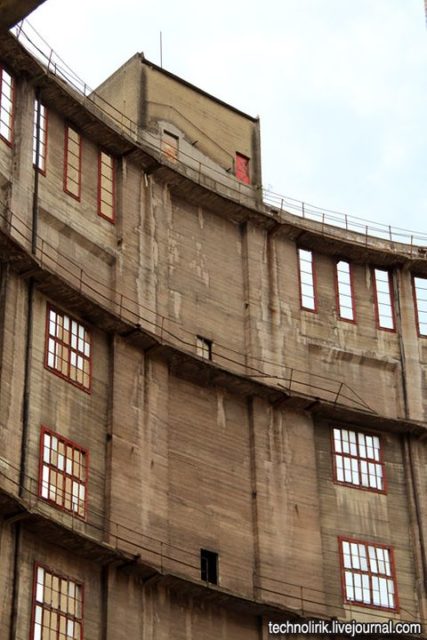
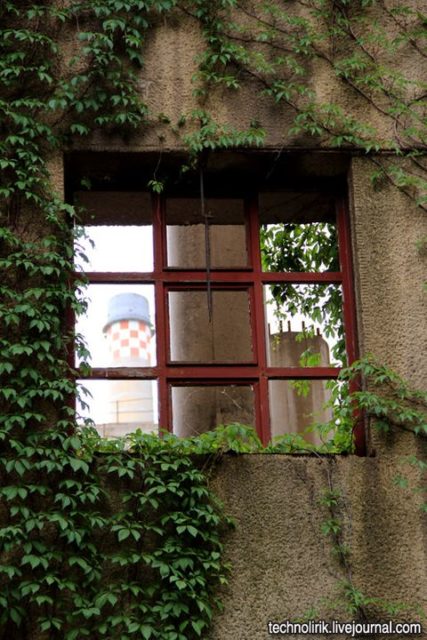
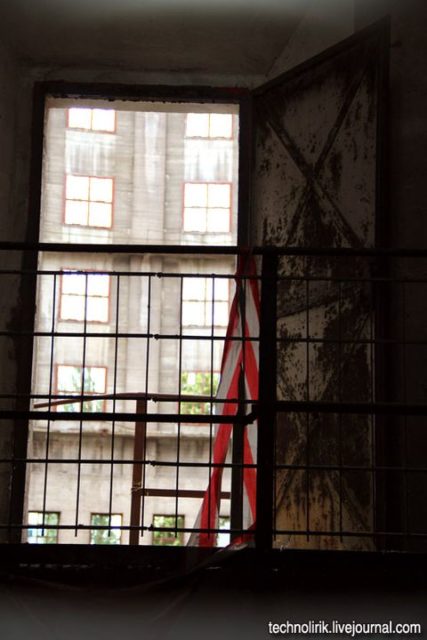
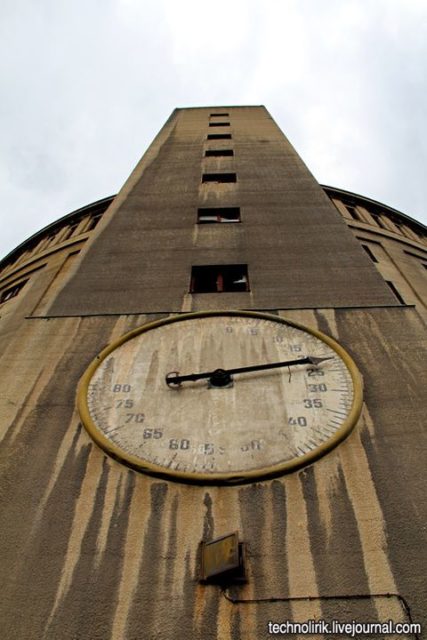
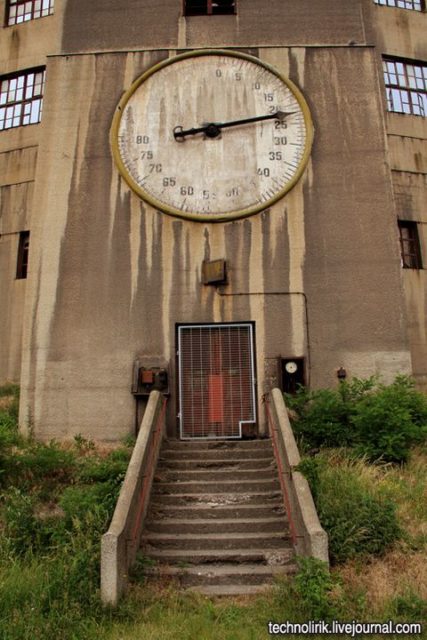
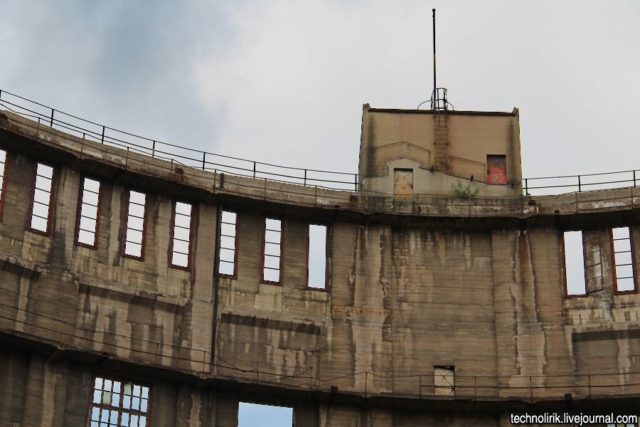
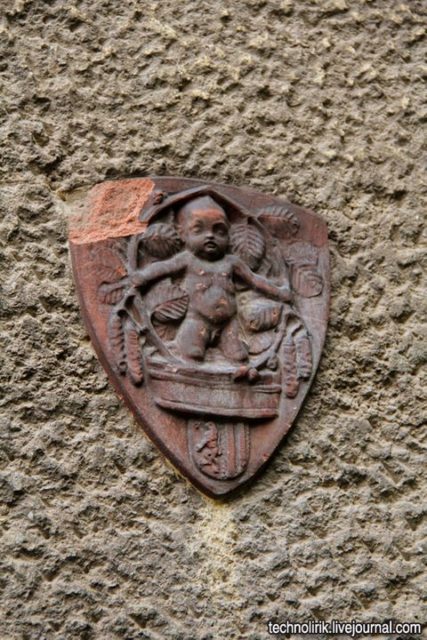
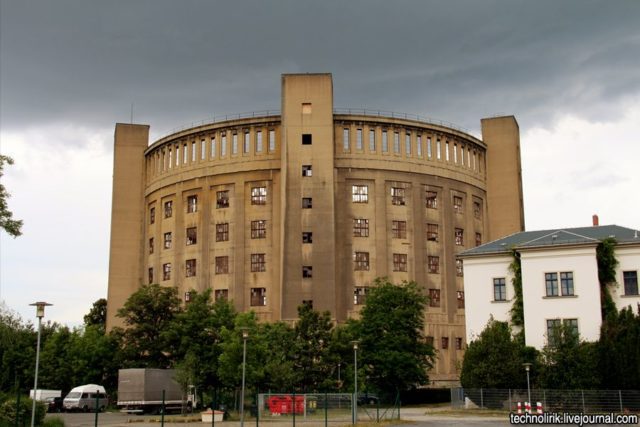
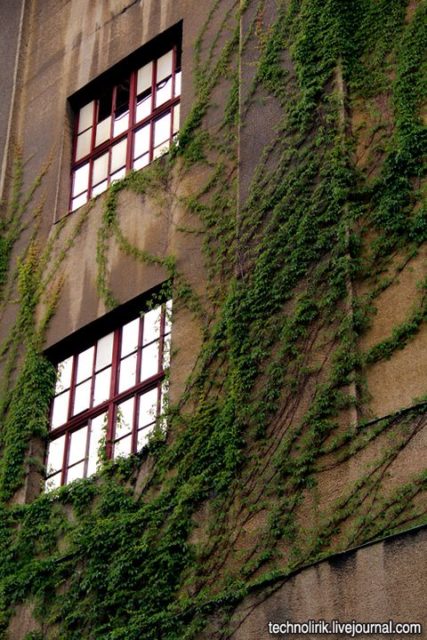
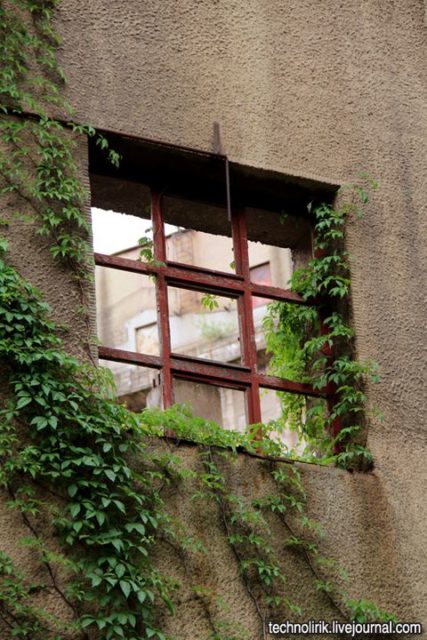
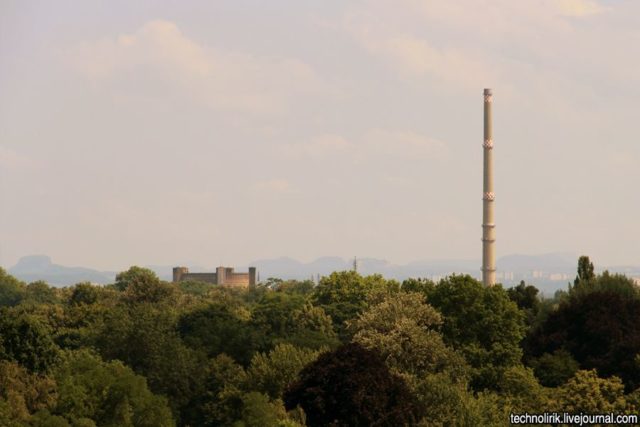
St Agnes Church in Detroit, Michigan
